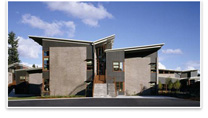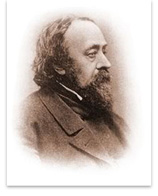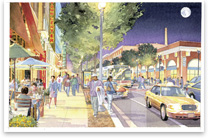 U.S. Mayors Champion the Greening of America’s Schools U.S. Mayors Champion the Greening of America’s Schools
To support the health and well-being of America’s students, the U.S. Conference of Mayors (USCM), unanimously supported a green schools resolution last month at its 75th annual meeting in Los Angeles. The resolution, introduced by Mayor T.M. Franklin Cownie of Des Moines and co-sponsored by 16 additional mayors, urges Congress to fund K–12 green school demonstration projects as well as new research to understand better the environmental, economic, and health benefits of green schools. 
 REMINDER REMINDER
Upjohn Research Submissions Due September 1
The AIA is seeking proposals for research projects to be completed in an 18-month period, beginning December 1, 2007. Up to four grants will be awarded between $15,000 and $25,000 each for selected projects; these funds will need to be matched. Proposals that address building typology, practice issues, or materials and methods of construction are welcome. Recipients will have their findings and outcomes published electronically and in a nationally distributed publication. Preference will be given to proposals that have teams composed of academics and practitioners. Beneficial to selection are long track records of collaboration by the teams. For the complete call for proposals, which includes a list of AIA research priorities, click on this link to the Call for Submissions. 
 Federal Highway Administration Honors EE&K for “Great Streets” Federal Highway Administration Honors EE&K for “Great Streets”
The New York City-based and internationally renowned Ehrenkrantz Eckstut & Kuhn Architects (EE&K), received a Federal Highway Administration (FHWA) Environmental Excellence Honorable Mention Award for “Great Streets,” the sustainable transportation program the architects designed for Washington, D.C. The Great Streets strategy revitalizes six major corridors in the nation’s capital—a total of 22 miles of roads in 50 distinct neighborhoods—by building sustainable, safe, and transportation-friendly communities. Fundamental strategies for the Great Streets program include allowing pedestrians, cyclists, cars, and public transit to coexist safely; providing well-lighted, shaded, and furnished spaces to promote public interaction; supplying easy and safe intersections; and giving each corridor a distinct character representing design excellence and cultural heritage. For more information and cases studies from this program, visit EE&K’s Web site. 
 Research Points Up Benefits of Private Rooms in Nursing Homes Research Points Up Benefits of Private Rooms in Nursing Homes
In “Private Bedrooms in Nursing Homes: Benefits, Disadvantages, and Costs,” an article in the current issue of the AIA Design for Aging newsletter, environment-behavior researcher Margaret P. Calkins, PhD, indicates that patients in private rooms experience better outcomes than those in shared rooms. Calkins explored four types of outcomes related to the different room configurations: psycho-social, clinical, operational, and construction/building factors. The vast majority of factors indicated better outcomes associated with private rooms over shared rooms. Her detailed cost analysis suggests construction cost differentials range from $5,000 to $22,000 (including debt) across the different room configurations, which can be recouped in less than four years if beds remain occupied, and in less than five months if a shared-room bed remains unoccupied. To read the article, see the current issue (Summer 2007) on the Design for Aging Web site. 
|
 U.S. Mayors Champion the Greening of America’s Schools
U.S. Mayors Champion the Greening of America’s Schools


